The Marchioness, 2016; charcoal, pastel, and pencil on paper.
A few weeks ago the stars aligned: it was a sunny afternoon, my meetings for the day wrapped up early and I was in San Francisco (SOMA) with a few hours to spare and I was only two blocks away from the Museum of the African Diaspora. It was the perfect occasion to finally check out an exhibit I’ve been wanting to see for months: A Matter of Fact by Toyin Ojih Odutola which was on display October 26, 2017 – April 2, 2017.
Toyin Ojih Odutola is Nigerian born contemporary artist who is known for her pen, ink and charcoal drawings. When she was nine she moved to the United States and began a new life with her family in Alabama. It was there, in the conservative state of Alabama, that she first felt the sting of being black and “foreign”. Odutola states:“Before that, being black and African was just part of… what made me and I was treated based on my performance. But when I moved to Alabama, I realized my performance no longer mattered because my skin suddenly spoke for me. I realized it would impact how people treated and responded to me and that continued into my adulthood.”
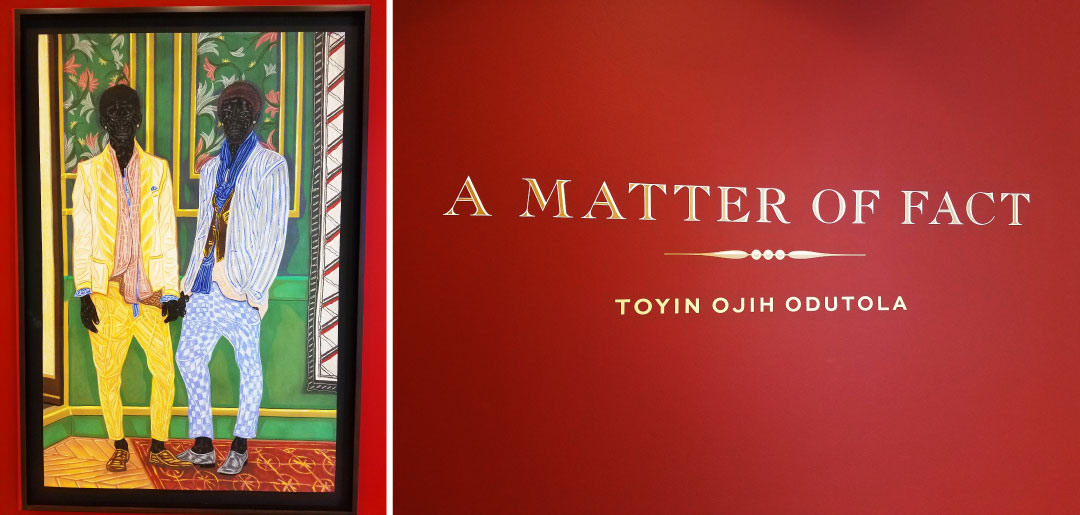
Newlyweds on Holiday, 2016; charcoal, pastel, and pencil on paper.
A lot of Toyin Odutola’s work focuses on identity and the concept of skin color – this theme was present in her A Matter of Fact exhibit. A towering portrait of two well-dressed Black men (The Newlyweds on Holiday) greeted me when I stepped off the elevator on the gallery floor. When I turned the corner to enter the gallery, a huge text wall explained that the men depicted in the drawing are The Marquis of UmuEze Amara and his husband Lord Temitope of Omodele.
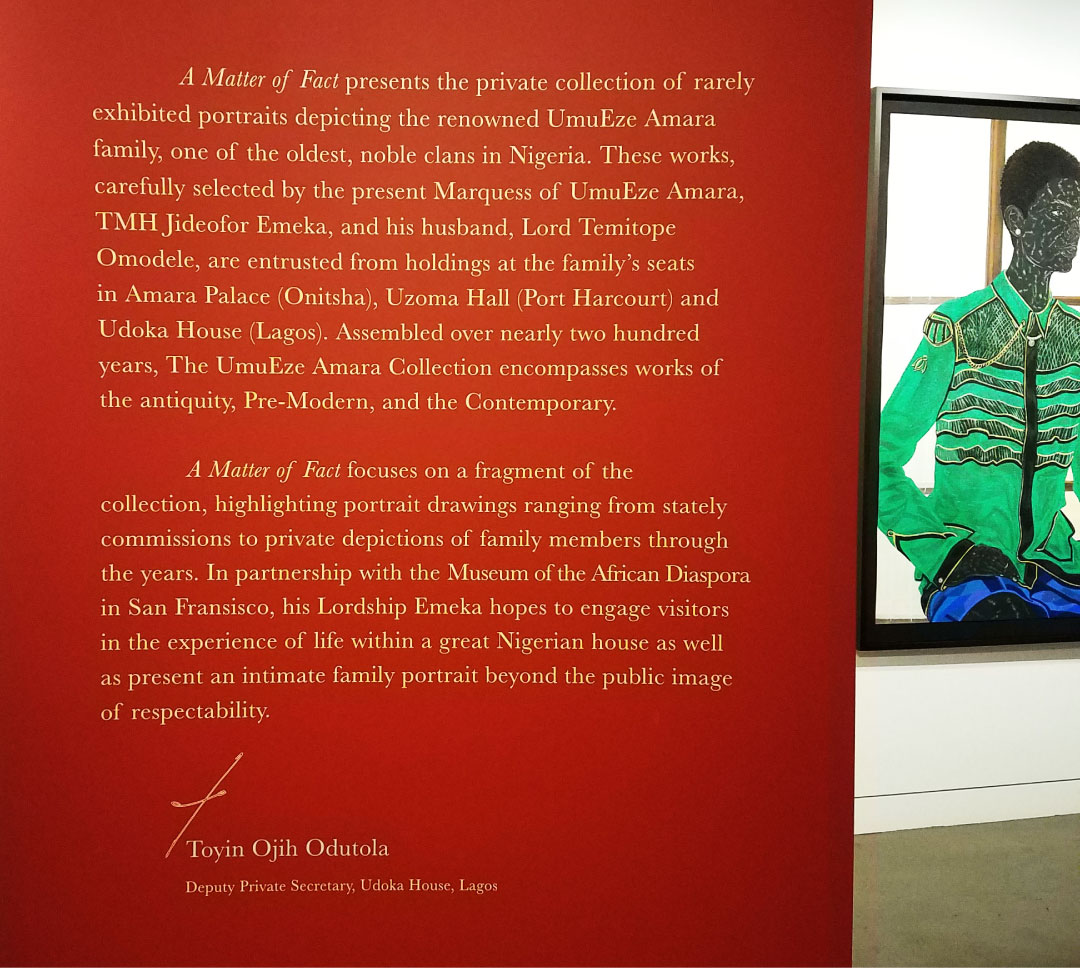
(In partial view on right) Casual Full Dress, 2016; charcoal, pastel, and pencil on paper.
The text continued to reveal that the huge charcoal and pastel drawings that filled the gallery were graciously shared by the Marquis and his husband as part of the treasured collection of portraits belonging to the UmuEze Amara Family, one of the oldest noble clans in Nigeria. The statement was signed by Toyin Odutola who gives herself the title of the Deputy Private Secretary of the Udoka House of Lagos.
Hold your horses, don’t go Googling anything just yet. The premise of the exhibit is complete fiction and a brilliant motive to explore the colorful kinfolk that comprise a wealthy noble Nigerian family.
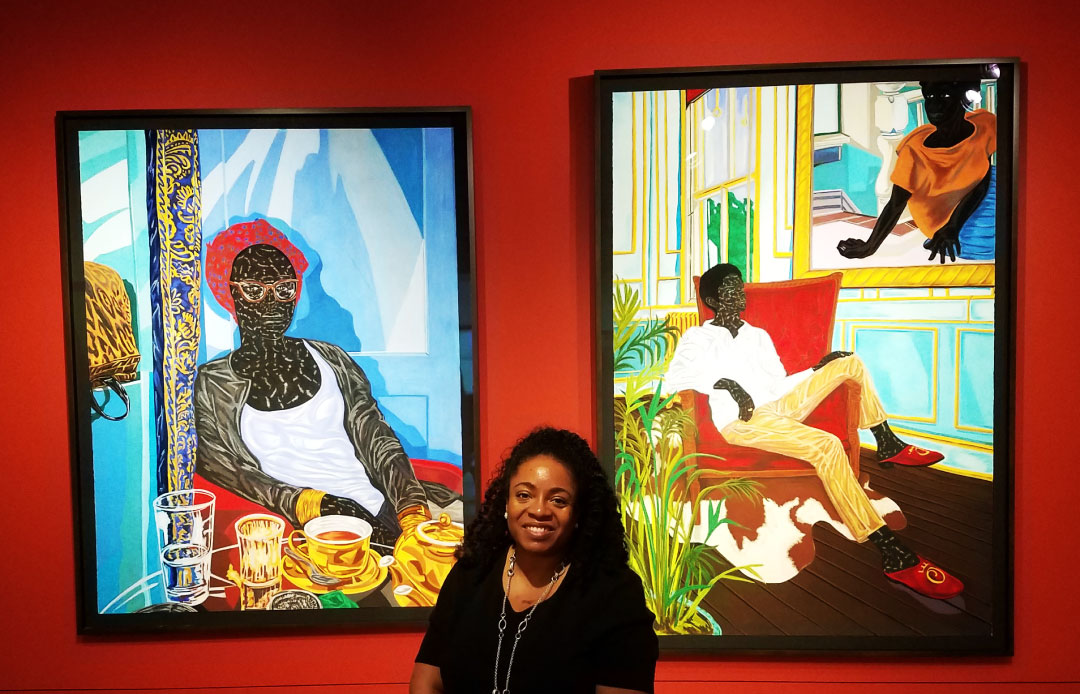
From Left to Right: Afternoon Tea, 2016. Charcoal, pastel & pencil on paper. ; A Grand Inheritance, 2016. Charcoal, pastel & pencil on paper.
The subjects in Odutola’s colorful drawings are posed in positions characteristic of commissioned portraits. They are depicted in settings that convey wealth and opulence – gold accents and luxurious home decor are seen in several of the works. The trappings of wealth decorating Toyin Odutola’s drawings are similar to those seen in portraits of America’s “beloved” Kennedy family, London’s Windsor family or the French royalty who held court at Versailles. The complexion of her subjects, however, adds a new twist to the traditional-style portraits.
The dark skin tone of the subjects in the portraits is a grounding element of Odutola’s drawings. This element is further emphasized through the artist’s use of intricate lines and patterns. Toyin Odutola’s deliberate approach to juxtaposing dark skin tones with colorful surroundings is similar to the manner in which Kerry James Marshall boldly celebrates melanated skin in his paintings.
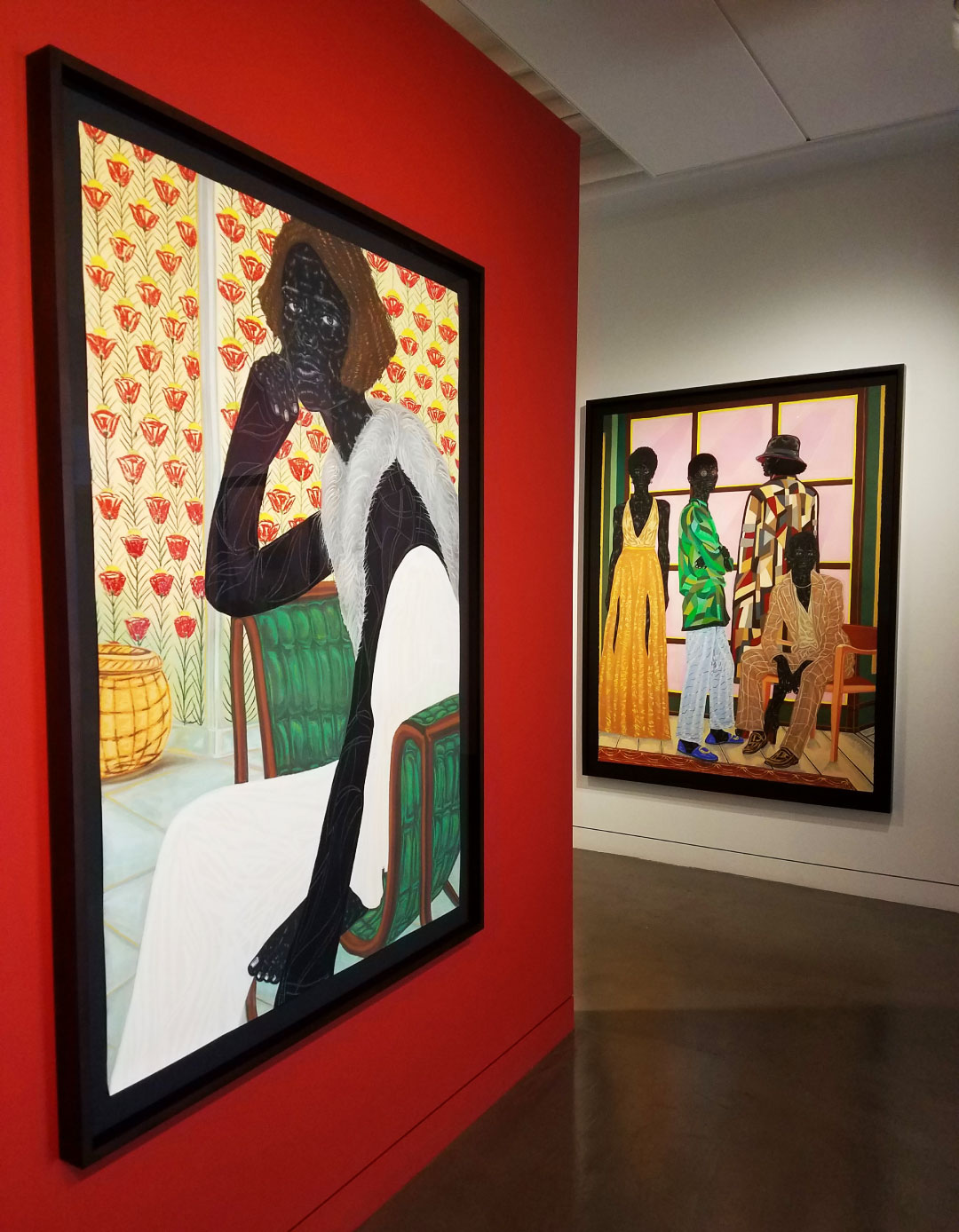
From Left to Right: Lazy Sunday, 2016. Charcoal, pastel & pencil on paper. ; The Adventuress Club est 1922, 2016. Charcoal, pastel & pencil on paper.
Intricate lines and patterns are also prominent in other elements of Toyin Odutola’s work. Patterns appear everywhere from the colorful wallpaper to the textured furniture and even in the clothing of her subjects. I like the tension created between the stiff (and somewhat awkward) position of the subjects and the fluid and movement of the patterns.
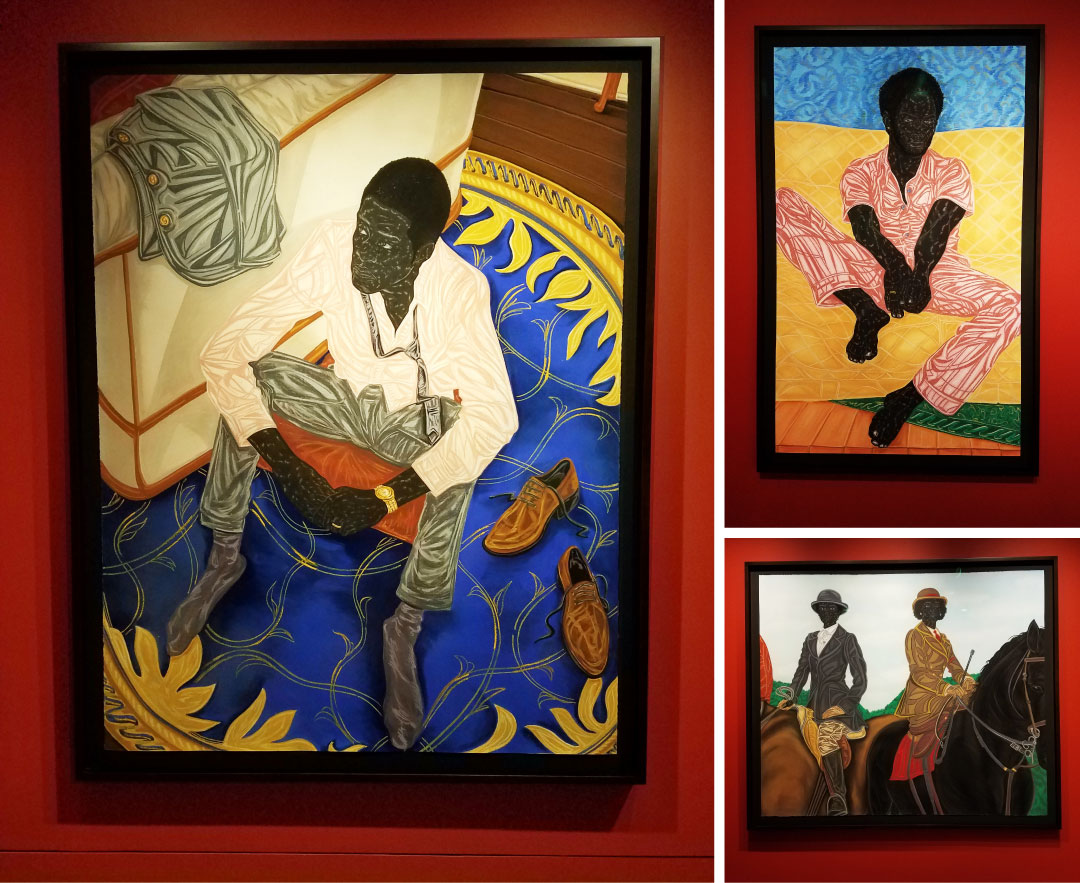
Clockwise Left to Right: A Misunderstanding with the Mistress, 2016. Charcoal, pastel & pencil on paper. ; The Enlightenment of the Second Son, 2016. Charcoal, pastel & pencil on paper, Hunting Season (Mother & Daughter), 2016. Charcoal, pastel & pencil on paper.
In the “red room”, at the rear gallery, I was dwarfed by portraits that flaunted the trappings of wealth; luxurious furs, equestrian excursions, silk pajamas, and well-kept mistresses. I apologize for the vertical video.
I enjoyed the exhibit and being engulfed in the colorful world of the UmuEze Amara Clan. Although the portraits are representative of generations of family history, the artist actually created them all within the year of 2016. I also respect that Odutola pushed her work beyond aesthetics to tackle weighty topics of wealth & worth in the global economy. There is a bit of irony in the fact that the artist created a fictional noble African family; I have a few ideas about this nuance, but perhaps Toyin Odutola sums in up best by stating:
“In sum, A Matter of Fact questions how we value the depictions of wealth: how we translate the markings of it into our culture. It is something so desired and fought after in our society, but no one can truly compact it. It readjusts itself and morphs with the times. It encompasses a variety and in turn can be inhabited by a variety of people. The irony is that you often do not see such variety in depictions of wealth in the Western art historical canon. I am not here to ask “Why is that so?”, this is not the case, because that question answers itself. What I did ask myself in the making of this series is:” Why does it matter?”
What are your thoughts?
FOLLOW ME

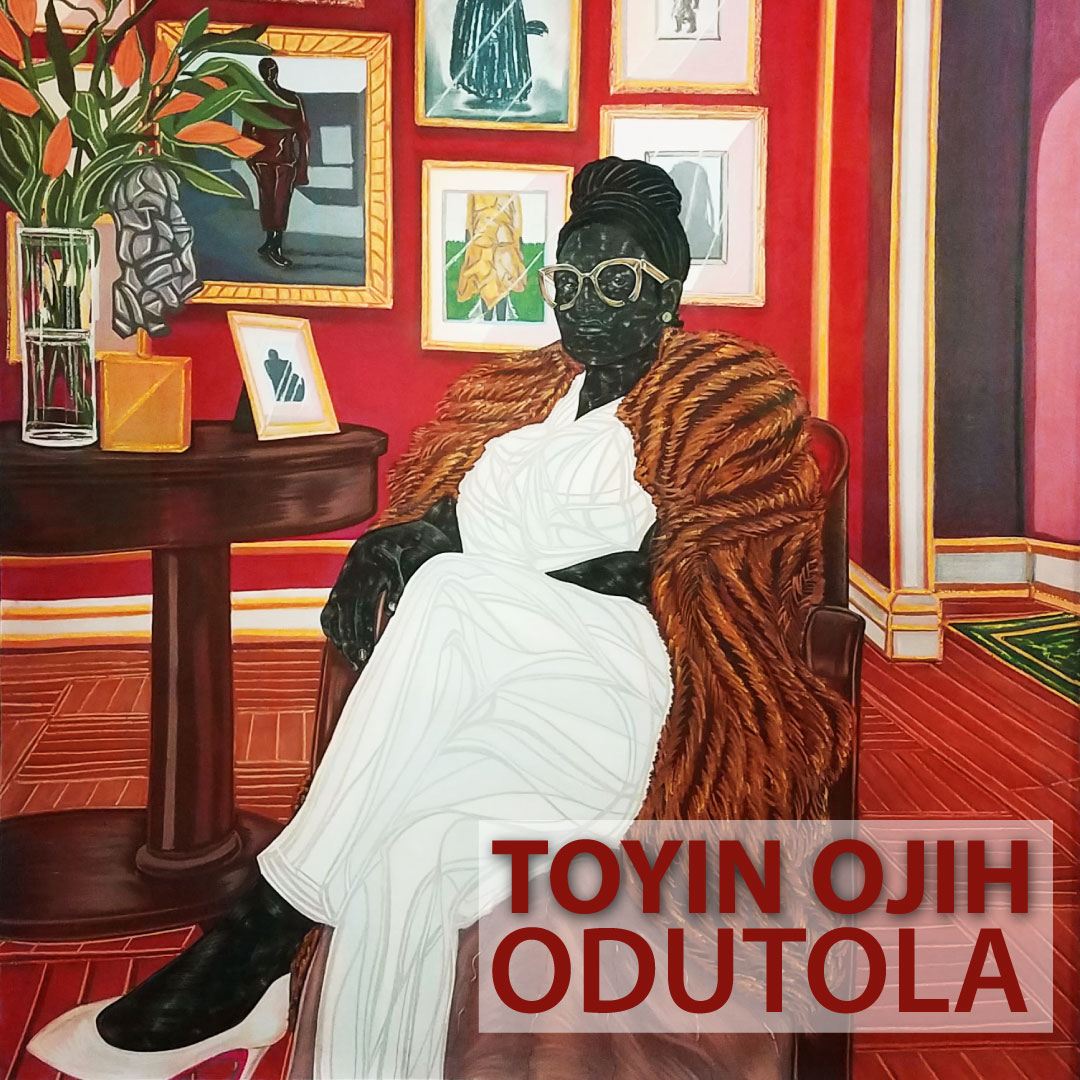
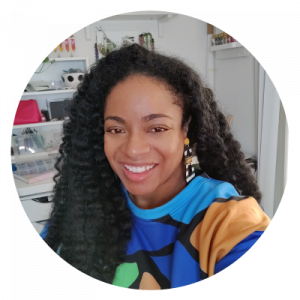 Multi-faceted Designer, Creative Director & Founder of SCOTCHBONNET! Accessories
Multi-faceted Designer, Creative Director & Founder of SCOTCHBONNET! Accessories